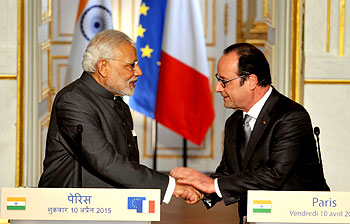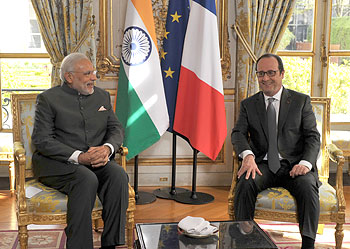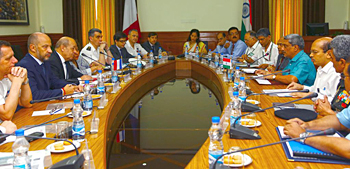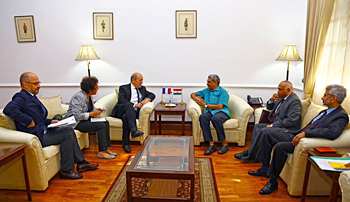INDIAN ARMED FORCES CHIEFS ON OUR RELENTLESS AND FOCUSED PUBLISHING EFFORTS

SP Guide Publications puts forth a well compiled articulation of issues, pursuits and accomplishments of the Indian Army, over the years

"Over the past 60 years, the growth of SP Guide Publications has mirrored the rising stature of Indian Navy. Its well-researched and informative magazines on Defence and Aerospace sector have served to shape an educated opinion of our military personnel, policy makers and the public alike. I wish SP's Publication team continued success, fair winds and following seas in all future endeavour!"

Since, its inception in 1964, SP Guide Publications has consistently demonstrated commitment to high-quality journalism in the aerospace and defence sectors, earning a well-deserved reputation as Asia's largest media house in this domain. I wish SP Guide Publications continued success in its pursuit of excellence.
- Indian Air Force Aims for Full Indigenous Inventory by 2047 — Air Chief Marshal A.P. Singh
- Rajnath Singh assumes charge as Defence Minister for the second consecutive term
- Interim Defence Budget 2024-25 — An Analysis
- Union Defence budget 2024
- Prime Minister Modi Flies in the LCA Tejas
- New Chapter in India-Italy Defence Ties
- Airpower beyond Boundaries
Talks begin for the Rafale deal
This is the first time that India would be negotiating a major defence deal with France on government-to-government basis, though the French government has played a major role in all previous defence acquisitions.


Good days seem to have arrived for the French aerospace major Dassault Aviation who have begun talks with the Indian Government for the supply of 36 Rafale combat jets. Qatar has already signed a $7 billion deal for 24 aircraft while UAE is negotiating for the purchase of 60. Meanwhile, Egypt has also negotiated a deal for 24 aircraft. Going by the way the French have signed a $7 billion deal with Qatar for 24 Rafale aircraft, , it would appear that the Indian Government will have to pay a hefty $11 billion for 36 Rafales. But the Indian Government sources assert that the Qatar deal would not be a benchmark and they also dismiss media reports as purely speculative that the French Government has agreed to give 25 per cent discount and the deal would be worth $8 billion. The negotiations are yet to begin as the two countries have decided to set up teams to work out details of the acquisition of the 36 Rafale Jets in fly away condition in a time-bound manner. But neither side has specified the time line in which the deal would be concluded. However, defence sources indicated that the French Government had offered the deal to be conducted on the basis of the price which was paid by the French Air Force to Dassault Aviation.
The French Defence Minister Jean-Yves Le Drian lost no time in arriving in Delhi within a month of Prime Minister Narendra Modi conveying his decision to President Francois Hollande to acquire 36 Rafales through inter-governmental negotiations. Indian and French defence ministers agreed on the modalities to be adopted for finalising the cost of the entire deal. A cryptic statement from the Indian Ministry of Defence (MoD) after the talks on May 06, 2015, read as “The two Defence Ministers discussed modalities in order to reach an early conclusion of an Inter-Governmental Agreement on the subject. The two sides decided to set up teams to work out the details in a time-bound manner.” However the two sides are maintaining strict silence on what actually transpired between the two defence ministers.



The Qatar Air Force will have to pay an average of $300 million per plane, a cost that the Indian Government may not find to be affordable. The Indian defence minister Manohar Parrikar had earlier said that the two ministers would not be directly involved in the negotiations and it would be left to the two teams to work out the final deal. Critics also point out that when the tender for the medium multi-role combat aircraft (MMRCA) was issued in 2007, the MoD had estimated the deal to be worth $10.4 billion for 126 aircraft. Now if only 36 aircraft are to be acquired for $8 billion or so, it would be a huge loss to Indian exchequer.
Prime Minister Modi sprung a surprise through his out-of-the-box approach to acquire 36 Rafales directly to meet the immediate needs of the IAF.
However, the MMRCA tender has been cancelled due to inordinate delay as the Indian Government could not decide on the deal after French Rafale emerged as L-1 contender beating the rival Eurofighter. Later on it emerged that Life Cycle Cost of the Rafale would be much higher than that of the Eurofighter. This raised the hackles in the MOD headed by A K Antony who left the decision to the next government. Since the negotiations were proving to be too complex and costs were too high, the Modi government also could not take a decision. However, since the Indian Air Force (IAF) was in dire need of urgent induction of the new generation fighter aircraft to replace its ageing MiG fleet, the Government offered unique out-of-the-box solution of acquiring only 36 Rafales through direct purchase via the government-to-government route. It is to be seen how the Government of France influences or mediates in a commercial deal. According to officials, a team from Dassault Aviation will be providing technical assistance to the negotiating teams set up by India and France.
Under the MMRCA contract, India would have ordered 18 Rafales off the shelf and an agreement between Dassault and Hindustan Aeronautics Limited (HAL) for the manufacture of 108 aircraft in India had already been finalised. But Prime Minister Modi sprung a surprise through his out-of-thebox approach to acquire 36 Rafales directly to meet the immediate needs of the IAF.
This would be for the first time that India would be negotiating a major defence deal with France on government-to-government basis, though the French government has played a major role in all previous defence acquisitions. Previously India only engaged with the US Administration in acquisition of weapons and platforms through Foreign Military Sales programme. Under this programme the buyer country acquires a weapon system or weapon platform at the price negotiated between the US armament company and the US armed forces. This price is taken as a benchmark and over and above this cost, the buyer country has to pay additional eight per cent service and administrative cost for overseeing the transaction.
It is not clear if the Indian Government will negotiate on the basis of the price at which the French Air Force acquired the Rafales from Dassault Aviation. However, the Indian Government may offer the French the prospects of manufacturing the rest of the 90 aircraft (originally 108 under the MMRCA contract) in India under the “Make In India” programme. Since Dassault Aviation is suddenly getting orders from the Arab countries, its production line will not be able to fulfil the orders within the stipulated time. France may therefore consider setting up a facility in India in collaboration with an Indian private or public sector company for taking care of the maintenance needs of the Arab Air Forces and supplying the Rafale fighter jets to the IAF as well.





